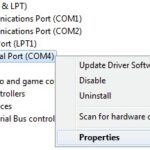The B6 Audi A4, like many modern vehicles, relies heavily on its catalytic converter to reduce harmful emissions. The Engine Control Unit (ECU) manages this process using lambda sensors and complex algorithms. VCDS (VAG-COM Diagnostic System) offers a powerful tool for diagnosing and potentially resolving issues related to the catalytic converter system. This article delves into the specific VCDS measuring blocks relevant to lambda control for the B6 Audi A4, focusing on factory coding adaptation procedures.
Understanding Lambda Control with VCDS
VCDS allows access to various measuring blocks that provide real-time data from the lambda sensors and the ECU’s interpretation of that data. Understanding these readings is crucial for identifying potential problems with the catalytic converter, oxygen sensors, or the ECU itself. Here’s a breakdown of some key measuring blocks for lambda control in a B6 Audi A4:
Oxygen Sensor Readings and Adaptation (Measuring Blocks 032, 033, 036, 043)
- Measuring Blocks 032 & 033 (Lambda Control): These blocks display the adaptation values for the pre-cat oxygen sensor (Bank 1 Sensor 1). Fluctuations within a specific range are normal, indicating the ECU is adjusting fuel mixture for optimal combustion. Significant deviations or readings consistently outside the expected range could point to a faulty sensor or other issues. Block 033 also displays the sensor voltage.
- Measuring Block 036 (Lambda Control – After Catalyst): This block provides data from the post-cat oxygen sensor (Bank 1 Sensor 2). A consistently low voltage compared to the pre-cat sensor signifies proper catalytic converter function. Higher voltages could indicate a failing converter. “OK” in the Lambda Availability field indicates the sensor is functional.
- Measuring Block 043 (Aging Check: Bank 1 Sensor 2): This block performs an aging check on the post-cat sensor. The “OK” result confirms the sensor is functioning within acceptable parameters for its age. This test considers factors like engine speed, catalytic converter temperature, and lambda voltage.
Lambda Sensor Heating and Aging (Measuring Blocks 041, 034)
- Measuring Block 041 (Lambda Sensor Heating Bank 1): This block monitors the heating circuits of both oxygen sensors. The “ON” or “OFF” status indicates whether the heaters are functioning correctly. A faulty heater can lead to inaccurate sensor readings, especially during cold starts.
- Measuring Block 034 (Lambda Control – Aging Check: Bank 1 Sensor 1): This block runs a test on the pre-cat sensor, evaluating its dynamic factor against expected values. A “Test OFF” result, even with rising catalyst temperature, could point to a potential problem with the sensor or its wiring.
Catalytic Converter Performance Tests (Measuring Blocks 046, 037)
- Measuring Block 046 (Catalytic Conversion Test Bank 1): This block directly assesses the catalytic converter’s efficiency. A continuous “Test ON” status that doesn’t complete or intermittently flashes “Test OFF” indicates a potential problem with the converter’s ability to reduce emissions.
- Measuring Block 037 (Delta Lambda Bank 1): This block compares the signals from the pre- and post-cat sensors. A significant difference (“Delta Lambda”) could signify a poorly functioning catalytic converter. A test that remains in the “Test ON” state without completing suggests a potential issue.
Conclusion: Leveraging VCDS for Catalytic Converter Diagnostics
VCDS provides invaluable insights into the complex workings of the B6 Audi A4’s emissions control system. By understanding the data presented in these key measuring blocks, technicians can accurately diagnose problems related to oxygen sensors, catalytic converter performance, and ECU adaptation strategies. Correctly interpreting these readings is critical for efficient repairs and ensuring optimal vehicle performance and emissions compliance. Always consult the official Audi repair manuals and technical documentation for specific diagnostic procedures and factory coding guidelines.

